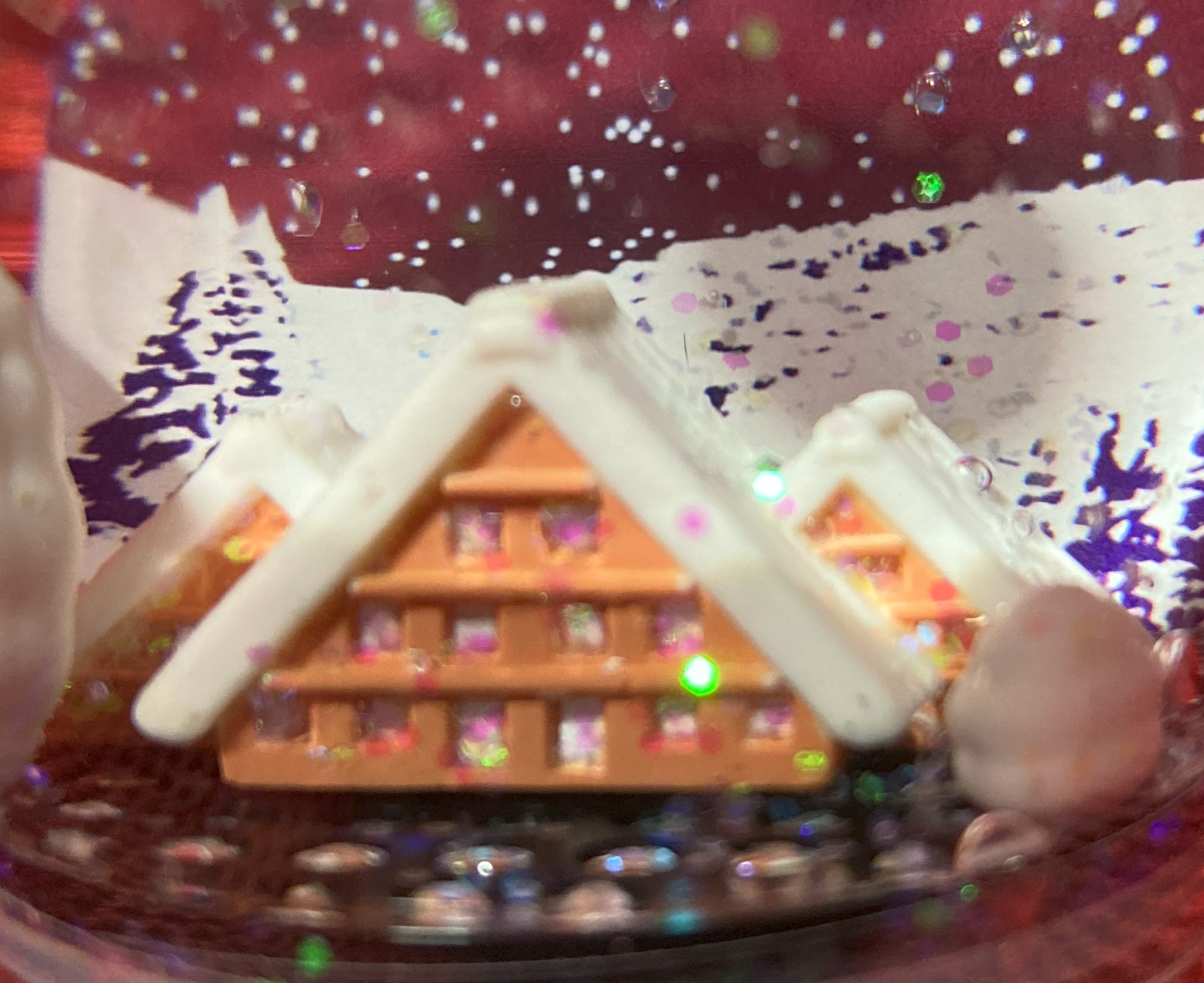本ブログは観光業、企業接待、留学生対応等で英語案内が必要ながら、多忙で準備に時間をかけられない方々の為にすぐに使える情報を分かりやすく解説しています。
今回は本編ブログ『世界遺産@白川郷わかりやすく解説』の《4.公開中の家屋>4.1 基本情報》のA級者用(日→英の対応が必要な方)向け演習《Dツール》です。
👉ショートカット&リンクについて!①最初に音声で学習されたい方はそのままお進み下さい。➁最初に原文を確認されたい方は【原文:英日】へ。③本編ブログを参照されたい方は『白川郷わかりやすく解説』へ。④音声ツールの概要を参照されたい方は『演習ツール』まで!
4 公開中の家屋
”Houses open to public”
4.1 基本情報
本編ブログの通り、本来説明表現ではありませんが、基本情報として使える表現もありますのでツールとしてご用意しました。
Dツール:”日⇒英”演習簡易ツール
本ブログ同様、全10文は前半パート(1-5)と後半パート(6-10)の2ファイル構成になっています。また日本語だけ演習向けに(不自然にならない範囲で日英の語順を合わせる様に)編集しています。
D1:日英確認用:『日本語』”英語”対訳
👉文単位で日本語の後に英訳が續きますので、内容の確認ができます。
D2:口頭即訳用:『日本語』のみ(ポーズ間に英訳)
👉各日本語文の後はポーズになっていますので、その間に英訳できます。
D3:リピーティング用:”英語”のみ(ポーズ無し)
👉英語音声のみが(ポーズなく)続きますので復唱ができます。
D4:内容チェック用:”英語”のみ(低速版:or同通演習用)
👉英語音声(ポーズなし)を低速版で復唱or同時通訳の演習ができます。速さはいつも通り、約120wpm(約85%低速版)です。
【原文:日英】
《日本語》
- 白川郷には一般公開されている合掌造り農家がいくつかあり、その多くは建築当初から住居として使われ続けています。
- この公開されている家々を訪問すれば、ユニークでよく保存された建築特徴や内装を探ることができ、合掌造りの歴史的意義を内側から見せてくれます。
- どの家にも合掌造り建築の共通点があるのは限られた土地の中で大家族を収容するための設計意図によるものですが、個々の家にもそれぞれの目的に合わせた特徴的な構造要素があります。
- 一般的に、これらの家屋が大きくする必要があったのは複数世代や親戚を含む大家族を収容する為ですが、合わせて養蚕業の為の確かなスペースとなっていて、24時間体制が必要でその使用人の為でもありました。
- 和田家は最も大きな家屋のひとつで、所有者が村の長を務めていたため、地方政府の役人を迎えるための正式な玄関がありますが、お祭りなどの特別な催しの時以外通常は閉じられています。
- この家屋は重要文化財に指定され200年近い歴史を持つのですが、隣の土蔵とトイレも含まれていて、トイレが歴史資産に登録されるのは珍しい事と言えます。
- 和田家の分家である神田家が特徴的なのは、小窓が付いた中二階があることで1階の囲炉裏の火を監視するためですが、この囲炉裏は今でも使われていて終日燃え続けています。
- 長瀬家は医師の住居として使われてきた歴史があり、建物は樹齢数百年の天然檜、栃、欅の高級木材が使われていて当家の高いステイタスを象徴しています。
- 明善寺では、庫裡と鐘楼門も合掌造りでできていて、醸し出しているのが宗教的な集会を思わせる独特の雰囲気で、教会にも似ていますが、通常の家屋では見られないものです。
- 20棟以上の合掌造り家屋の展示エリアがあり、神社や水車小屋なども含め、移築されたのですが訪問客は当時の農村全体の雰囲気を体感することができ、小川を泳ぐ鯉も完備してます。
《英訳例》
- Shirakawa-go has a few gassho-zukuri farmhouses that are open to the public, many of which have been continuously used as residences since they were originally built.
- These open houses allow visitors to explore the unique, well-preserved architectural features and interior showcasing historical significance of the gassho-zukuri style from within.
- While all of them share common features of gassho-zukuri architecture designed to accommodate extended families in an environment with limited land, each house also has distinct structural elements tailored to its own purposes.
- In general, these houses needed to be large enough to accommodate multiple generations and relatives, as well as to provide ample space for sericulture work, which required round-the-clock attention, and for the servants involved.
- The Wada House is one of the largest houses, and since its owner was the head of the village, it has a formal entrance for receiving local government officials, though this entrance is usually closed except during special events such as festivals.
- This house, designated as an important cultural asset with a history of nearly 200 years, includes a storehouse and a rest room next to the house—making it unusual for a rest room to be registered as a historical asset.
- Kanda House, a branch of Wada House, features a mezzanine floor with a small window for monitoring the fire in the hearth on the first floor, which is still used and remains continuously burning all day long.
- The Nagase family residence, historically used as a doctor’s home, is constructed from centuries-old natural cypress, horse chestnut, and zelkova, symbolizing the high status of the family.
- At Myozenji Temple, the storehouse and bell tower gate are also built in the gassho-zukuri style, creating a unique atmosphere reminiscent of religious assemblies, similar to churches, which is not found in ordinary houses.
- There is an exhibition area where over 20 gassho-zukuri houses, including a shrine and a water mill house, have been relocated, offering visitors a chance to experience the atmosphere of a whole farm village from that time, complete with carp swimming in the stream.
《Glossaries!用語集》
大家族に対応する👉to accommodate extended families!土地が限られた環境👉an environment with limited land!24時間対応👉round-the-clock attention!燃え続ける👉to remain continuously burning!中2階👉a mezzanine floor!宗教的な集会を思わせる👉reminiscent of religious assemblies!水車小屋👉a water mill house
【補足】口頭用簡略英文
本編の口頭説明用の簡略英文を置きました。長々と説明された日本語を手短に通訳することは現場でよくありますので、D2(日→英)演習用に必要に合わせてご参照ください。ここでは英語音声(米国男性話者×1ファイル)だけ末尾に置いています。
《英語》
- Shirakawa-go has several gassho-zukuri farmhouses open to the public, which are still used as homes.
- Visitors can explore the unique, historic architecture and interiors from the inside.
- All the houses share common designs for large families on limited land, but each has unique features for specific needs.
- They had to be large enough to house multi-generational families and servants, with ample workspace for sericulture.
- The Wada House, one of the largest and former home of the village head, has an official entrance for high officials that’s now only opened during festivals.
- With nearly 200 years of history, this house is an important cultural asset and, surprisingly, even includes a rare historical toilet.
- The Kanda House,a branch of Wada House, has a mezzanine with a small window to watch the constantly burning hearth below.
- The Nagase family residence, once au doctor’s home, was built with centuries-old cypress, horse chestnut, and zelkova, showing their high status.
- Myozenji Temple has gassho-zukuri-style buildings, like a storehouse and bell tower gate, giving it a religious atmosphere similar to a church.
- There’s an exhibition area with over 20 relocated gassho-zukuri houses, showing a full farm village with carp swimming in the stream.
《日本語》
- 白川郷には一般に公開されている合掌造りの農家がいくつかありますが、現在も住居として使われています。
- 個性的で歴史的な建築物や内装を内部から見ることができます。
- どの家も、限られた土地で大家族が暮らすための共通した造りですが、それぞれの必要性に合わせたユニークな特徴があります。
- 複数代の家族と使用人を住まわせ、養蚕のための十分な作業スペースを確保するのに十分な広さが必要でした。
- 和田家は最大級の建物で、かつては村長の家でしたが、現在は祭りの時だけ開けられる高官用の正式な玄関があります。
- 200年近い歴史を持つこの家は重要文化財であり、歴史的に貴重なトイレまであります。
- 和田家の分家である神田家には中二階があり、囲炉裏の火を見る為の小窓があります。
- 長瀬家は、かつては医師の家でしたが、樹齢数百年のヒノキ、トチ、ケヤキで造られ、その家柄を物語っています。
- 妙善寺には、土蔵や鐘楼門などの合掌造りの建物があり、教会のような宗教的雰囲気を醸し出しています。
- 20棟以上の合掌造りの家屋を移築した展示エリアがあり、農村の全貌を見ることができ小川には鯉が泳いでます。
御礼&後書き
お忙しい中、今回も最後までご覧いただき大変ありがとうございました。今回テーマ含め今後も定期的にブラッシュアップして参りますので、引き続きご参照のほど宜しくお願い致します。🔶Gold🔶v.3b.3c.1a


